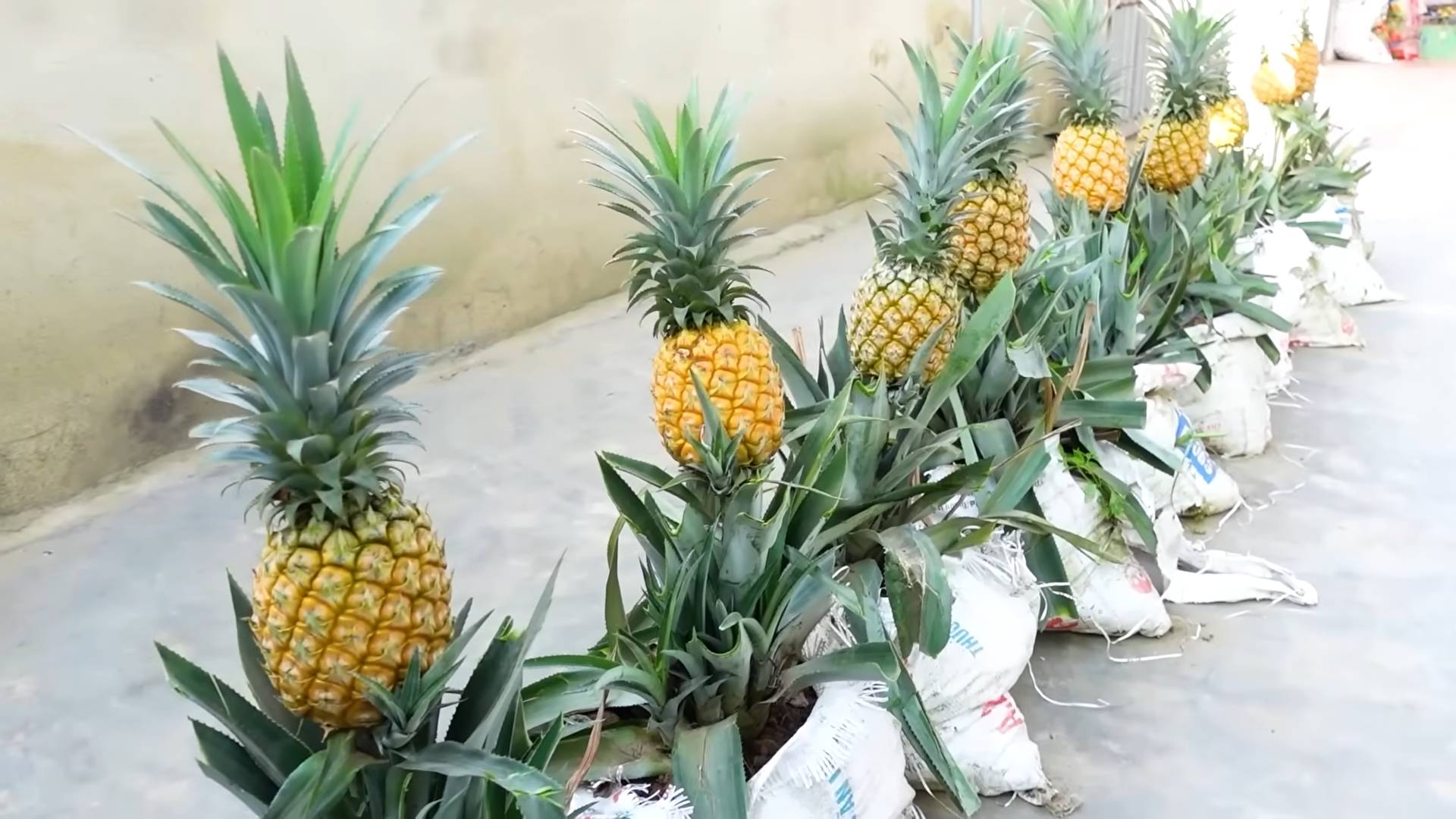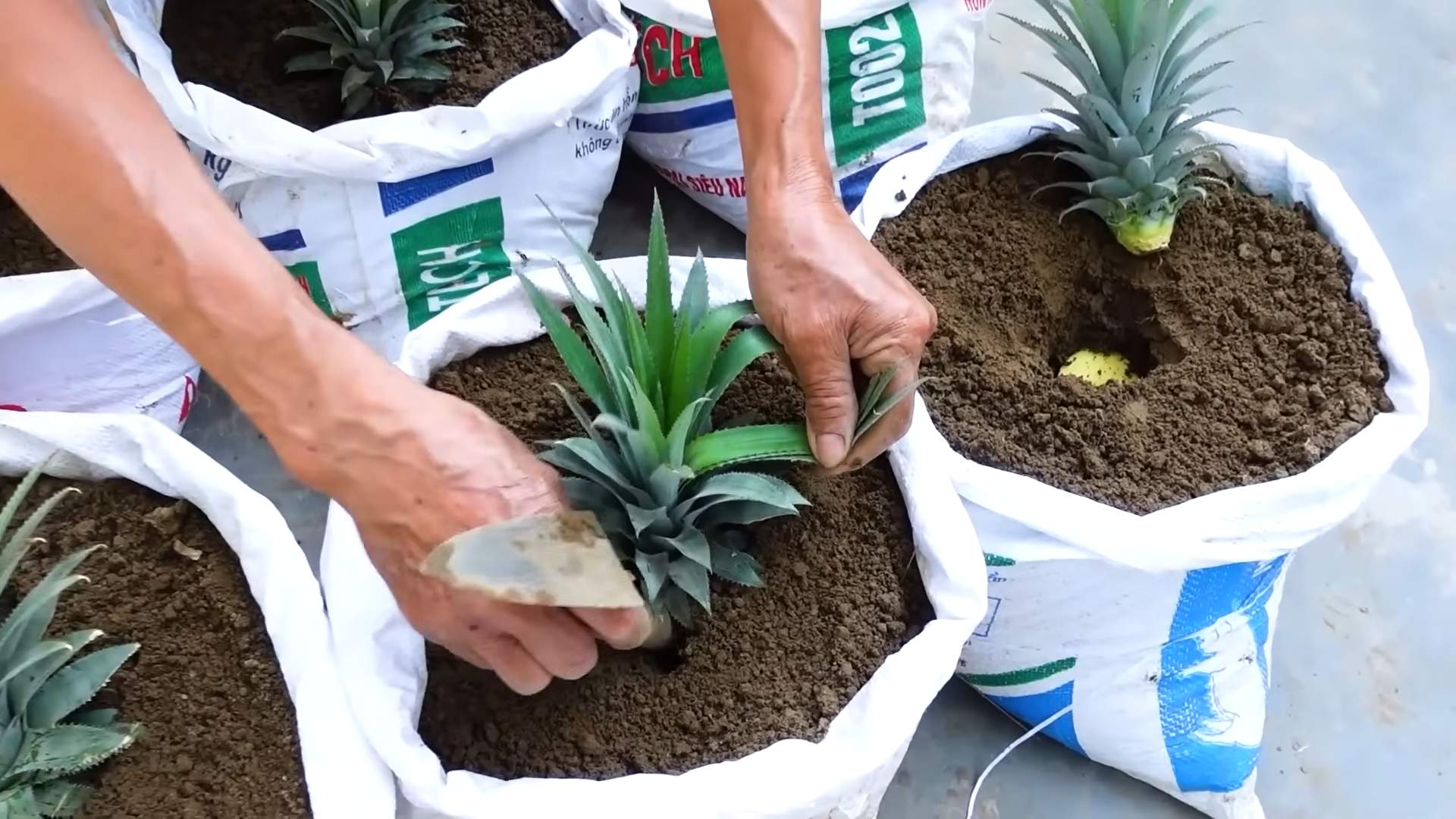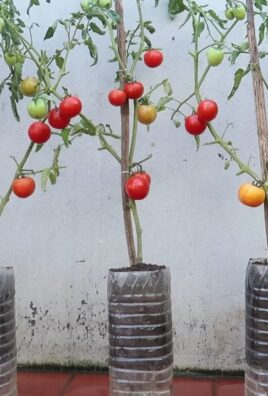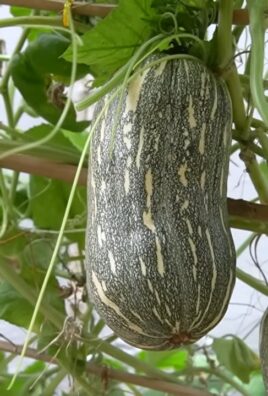Pineapple Farming at Home might sound like a tropical dream reserved for sunny plantations, but I’m here to tell you it’s totally achievable, even if you’re miles away from Hawaii! Forget those expensive grocery store pineapples – imagine plucking your own juicy, homegrown fruit right from your backyard or balcony.
For centuries, the pineapple has been a symbol of hospitality and luxury. Originating in South America, it was a prized possession, carefully cultivated and presented as a sign of welcome. Now, you can bring that same sense of abundance and tropical flair to your own home.
Why should you try pineapple farming at home? Well, besides the sheer satisfaction of growing your own food, it’s a fantastic way to reduce your carbon footprint, avoid harmful pesticides, and enjoy a truly delicious and fresh treat. Plus, it’s a fun and rewarding project that anyone can tackle, regardless of their gardening experience. I’m going to share some simple DIY tricks and hacks that will guide you through every step, from planting the crown to harvesting your very own golden pineapple. Get ready to transform your space into a mini-tropical paradise!

Growing Pineapples at Home: A Tropical Treat You Can Cultivate!
Hey there, fellow plant enthusiasts! Ever dreamt of harvesting your own juicy pineapple right from your backyard (or even your balcony)? Well, dream no more! Growing pineapples at home is surprisingly easier than you might think, and I’m here to guide you through the entire process. Get ready to add a touch of the tropics to your life!
Choosing Your Pineapple and Preparing for Planting
Before we dive into the nitty-gritty, let’s talk about selecting the right pineapple and getting everything ready.
* Choosing the Right Pineapple: The best way to start is with a store-bought pineapple. Look for one that’s ripe, with healthy, green leaves. Avoid pineapples with brown or damaged leaves, or those that feel too soft. The fresher the pineapple, the better your chances of success.
* Preparing the Pineapple Top: This is the most crucial step. We’re going to use the top of the pineapple as our “seed.”
* Gathering Your Supplies: You’ll need a sharp knife, a pot (at least 8 inches in diameter), well-draining potting mix (cactus mix works great!), water, and optionally, rooting hormone.
Step-by-Step Planting Guide
Now, let’s get our hands dirty!
1. Removing the Pineapple Top: Carefully cut off the top of the pineapple, about 1-2 inches below the base of the leaves. Make sure you remove all the fruit flesh from the base of the top. Any remaining fruit can rot and prevent rooting.
2. Cleaning the Base: Gently peel off the lower leaves from the base of the pineapple top, exposing about 1-2 inches of the stem. This will encourage root growth. Don’t be afraid to pull off a few layers of leaves – you want to see the little root nubs starting to form.
3. Drying the Top (Important!): This is a crucial step to prevent rot. Let the pineapple top dry out for 3-7 days. Place it in a well-ventilated area, away from direct sunlight. You’ll notice the cut end will start to callous over. This is a good sign!
4. Rooting in Water (Optional but Recommended): While you can plant the dried pineapple top directly into soil, I’ve found that rooting it in water first increases the success rate. Place the pineapple top in a glass or jar of water, ensuring that only the exposed stem is submerged. Change the water every 2-3 days to keep it fresh. You should see roots starting to emerge in a week or two.
5. Planting in Soil: Once the roots are about 1-2 inches long (if you rooted in water), or after the drying period (if you skipped the water rooting), it’s time to plant! Fill your pot with well-draining potting mix. Make a hole in the center of the soil and carefully place the pineapple top in the hole, ensuring that the roots are covered (if you rooted in water) and the base of the leaves is just above the soil line.
6. Watering: Water the newly planted pineapple top thoroughly, but don’t overwater. The soil should be moist, but not soggy.
7. Location, Location, Location: Pineapples love sunlight! Place your pot in a sunny location that receives at least 6 hours of direct sunlight per day. A south-facing window is ideal if you’re growing indoors.
Caring for Your Pineapple Plant
Okay, you’ve planted your pineapple top. Now comes the patience game! Here’s how to keep your pineapple plant happy and healthy.
* Watering: Water your pineapple plant when the top inch of soil feels dry to the touch. Avoid overwatering, as this can lead to root rot. During the winter months, you’ll need to water less frequently.
* Fertilizing: Pineapples are heavy feeders. Fertilize your plant every 2-3 months during the growing season (spring and summer) with a balanced liquid fertilizer. Follow the instructions on the fertilizer label.
* Temperature: Pineapples thrive in warm temperatures, ideally between 65°F and 85°F (18°C and 29°C). Protect your plant from frost and cold drafts. If you live in a colder climate, you may need to bring your pineapple plant indoors during the winter.
* Humidity: Pineapples appreciate humidity. If you live in a dry climate, you can increase humidity by misting your plant regularly or placing it on a pebble tray filled with water.
* Repotting: As your pineapple plant grows, it may eventually need to be repotted into a larger container. Repotting is usually necessary every 1-2 years. Choose a pot that is a few inches larger in diameter than the current pot.
* Pest Control: Keep an eye out for pests such as mealybugs and spider mites. If you notice any pests, treat your plant with insecticidal soap or neem oil.
Encouraging Fruiting
This is where things get interesting! It can take anywhere from 2 to 3 years for a pineapple plant to produce fruit. But don’t worry, there are a few tricks you can use to encourage fruiting.
* Ethylene Gas: Pineapples are stimulated to fruit by ethylene gas. You can create ethylene gas by placing an apple core near the base of the plant and covering the entire plant with a clear plastic bag for a week. Make sure the bag is sealed tightly to trap the gas. Remove the bag after a week and wait patiently.
* Magnesium Sulfate (Epsom Salts): Some gardeners swear by Epsom salts to encourage fruiting. Dissolve 1 tablespoon of Epsom salts in 1 gallon of water and water your pineapple plant with this solution every month during the growing season.
* Patience is Key: Remember, even with these tricks, it can still take time for your pineapple plant to fruit. Be patient and continue to provide proper care.
Harvesting Your Pineapple
Finally! The moment you’ve been waiting for. You’ll know your pineapple is ready to harvest when it turns a golden-yellow color and has a sweet, fragrant aroma. The fruit should also feel slightly soft to the touch.
* Harvesting: Use a sharp knife to cut the pineapple from the plant. Leave a few inches of stem attached to the fruit.
* Enjoy! Now, sit back, relax, and enjoy the fruits (literally!) of your labor. Your homegrown pineapple will be the sweetest, most rewarding pineapple you’ve ever tasted!
Troubleshooting
Even with the best care, you might encounter a few challenges along the way. Here are some common problems and how to fix them:
* Yellowing Leaves: Yellowing leaves can be a sign of overwatering, underwatering, or nutrient deficiency. Check the soil moisture and adjust your watering accordingly. Fertilize your plant if necessary.
* Brown Leaf Tips: Brown leaf tips are often caused by dry air. Increase humidity by misting your plant regularly or placing it on a pebble tray filled with water.
* Root Rot: Root rot is caused by overwatering. Make sure your pot has good drainage and allow the soil to dry out slightly between waterings. If root rot is severe, you may need to repot your plant with fresh potting mix.
* No Fruit: As mentioned earlier, it can take several years for a pineapple plant to fruit. Be patient and continue to provide proper care. Try the ethylene gas trick or Epsom salts to encourage fruiting.
Additional Tips for Success
Here are a few extra tips to help you succeed in growing pineapples at home:
* Use a well-draining potting mix: Pineapples don’t like to sit in soggy soil.
* Provide plenty of sunlight: Pineapples need at least 6 hours of direct sunlight per day.
* Water regularly, but don’t overwater: Allow the soil to dry out slightly between waterings.
* Fertilize regularly during the growing season: Pineapples are heavy feeders.
* Protect your plant from frost: Pineapples are sensitive to cold temperatures.
* Be patient: It can take several years for a pineapple plant to fruit.
Growing pineapples at home is a rewarding experience that allows you to enjoy fresh, delicious fruit right from your own garden. With a little patience and care, you can successfully cultivate these tropical treats and impress your friends and family with your green thumb! Happy growing!

Conclusion
So, there you have it! Cultivating your own pineapple at home isn’t just a fun project; it’s a rewarding experience that brings a touch of the tropics right to your doorstep. We’ve walked you through the simple steps, from selecting the perfect pineapple top to nurturing it into a thriving plant. Forget expensive grocery store pineapples – imagine the satisfaction of harvesting your very own, bursting with fresh, homegrown flavor.
This DIY pineapple farming adventure is a must-try for several reasons. First, it’s incredibly cost-effective. Instead of repeatedly purchasing pineapples, you’re essentially recycling the top and turning it into a sustainable source of fruit. Second, it’s an engaging and educational activity, perfect for families and anyone interested in learning more about plant propagation. It’s a fantastic way to connect with nature and appreciate the miracle of growth. Third, the taste of a homegrown pineapple is simply unparalleled. The sweetness and juiciness are intensified, making it a truly special treat.
But the best part? You can customize your pineapple growing journey! Experiment with different soil types to see which yields the best results. Try growing your pineapple in a decorative pot to add a touch of tropical flair to your patio or balcony. Consider using organic fertilizers to ensure the healthiest and most flavorful fruit. You can even try different varieties of pineapple, if you can source the tops, to compare their growth habits and taste profiles.
Don’t be intimidated by the seemingly long wait time. Remember, patience is key in gardening. The anticipation of that first homegrown pineapple will make the eventual harvest all the more satisfying. And while you wait, you’ll have a beautiful, unique plant to admire.
We wholeheartedly encourage you to embark on this DIY pineapple farming adventure. It’s a simple, sustainable, and incredibly rewarding way to enjoy the taste of the tropics. Once you’ve harvested your first pineapple, you’ll be hooked!
We’re confident that with a little care and attention, you’ll be enjoying your own homegrown pineapples in no time. So, grab a pineapple, follow our guide, and get ready to experience the joy of DIY pineapple farming.
And most importantly, we want to hear about your experiences! Share your photos, tips, and stories with us in the comments below. Let’s create a community of home pineapple growers and inspire others to join the fun. What challenges did you face? What successes did you celebrate? Your insights will be invaluable to other aspiring pineapple farmers. Let’s grow together!
Frequently Asked Questions (FAQs)
How long does it really take to grow a pineapple from a top?
Patience is definitely a virtue when it comes to growing pineapples! From planting the top to harvesting a mature fruit, you’re looking at a timeframe of approximately 2 to 3 years. The exact duration can vary depending on factors like climate, sunlight exposure, soil quality, and the specific pineapple variety. Don’t get discouraged if it seems like it’s taking a while; the wait is well worth it for the delicious reward. Remember to provide consistent care and monitor your plant regularly.
What kind of soil is best for growing pineapples?
Pineapples thrive in well-draining, slightly acidic soil. A sandy loam mix is ideal, as it allows for good aeration and prevents waterlogging, which can lead to root rot. You can create your own mix by combining equal parts of potting soil, sand, and perlite or vermiculite. Avoid heavy clay soils, as they tend to retain too much moisture. Adding organic matter, such as compost or well-rotted manure, can also improve soil fertility and drainage. Before planting, test the soil pH to ensure it’s within the range of 5.5 to 6.5.
How much sunlight does a pineapple plant need?
Pineapples are sun-loving plants and require at least 6 to 8 hours of direct sunlight per day to thrive. If you’re growing your pineapple indoors, place it near a south-facing window where it can receive ample sunlight. If you don’t have enough natural light, you can supplement with grow lights. Insufficient sunlight can result in slow growth, weak stems, and reduced fruit production. During the hottest part of the day, especially in warmer climates, providing some afternoon shade can prevent the leaves from scorching.
How often should I water my pineapple plant?
Watering frequency depends on factors like climate, soil type, and the size of the pot. Generally, you should water your pineapple plant when the top inch of soil feels dry to the touch. Avoid overwatering, as this can lead to root rot. During the growing season (spring and summer), you may need to water more frequently than during the dormant season (fall and winter). Ensure that the pot has adequate drainage holes to prevent water from accumulating at the bottom. When watering, thoroughly saturate the soil until water drains out of the bottom of the pot.
How do I encourage my pineapple plant to flower and fruit?
Getting your pineapple plant to flower can sometimes be a challenge, but there are a few tricks you can try. One common method is to expose the plant to ethylene gas, which is a natural plant hormone that promotes flowering. You can do this by placing a ripe apple or banana near the plant and covering it with a plastic bag for a few days. The ripening fruit will release ethylene gas, which can trigger flowering. Another method is to water the plant with a solution of calcium carbide (available at some garden centers) diluted in water. Follow the instructions on the product label carefully. Ensure your plant is getting adequate sunlight, water, and nutrients, as these are essential for flowering and fruit production.
What are some common pests and diseases that affect pineapple plants?
Pineapple plants are generally relatively pest-resistant, but they can occasionally be affected by pests like mealybugs, scale insects, and spider mites. These pests can suck sap from the plant, causing stunted growth and yellowing leaves. You can control these pests by wiping them off with a damp cloth or spraying the plant with insecticidal soap or neem oil. Root rot is a common disease that can affect pineapple plants, especially if they are overwatered or grown in poorly draining soil. To prevent root rot, ensure that the soil is well-draining and avoid overwatering. If you suspect root rot, repot the plant in fresh, well-draining soil and remove any affected roots.
Can I grow a pineapple plant indoors?
Yes, you can definitely grow a pineapple plant indoors, especially if you live in a climate with cold winters. Choose a pot that is large enough to accommodate the plant’s root system and ensure that it has adequate drainage holes. Place the plant near a south-facing window where it can receive ample sunlight. If you don’t have enough natural light, you can supplement with grow lights. Water the plant regularly, allowing the soil to dry out slightly between waterings. Fertilize the plant every few weeks during the growing season with a balanced liquid fertilizer. Keep an eye out for pests and diseases and take action promptly if you notice any problems.
What kind of fertilizer should I use for my pineapple plant?
Pineapples benefit from regular fertilization, especially during the growing season. Use a balanced liquid fertilizer with an N-P-K ratio of 10-10-10 or 14-14-14. Dilute the fertilizer according to the instructions on the product label and apply it every 2 to 4 weeks during the spring and summer months. Avoid over-fertilizing, as this can damage the plant. You can also supplement with organic fertilizers, such as compost tea or fish emulsion.
How do I know when my pineapple is ripe and ready to harvest?
Determining when a pineapple is ripe can be tricky, but there are a few telltale signs to look for. The color of the pineapple will change from green to yellow or golden-orange, depending on the variety. The fruit will also develop a sweet, fragrant aroma. Gently tug on one of the leaves near the top of the pineapple; if it comes off easily, the pineapple is likely ripe. You can also tap the pineapple; a ripe pineapple will have a dull, thudding sound. Once the pineapple is ripe, cut it off the plant with a sharp knife, leaving a few inches of stem attached. Enjoy your homegrown pineapple!




Leave a Comment